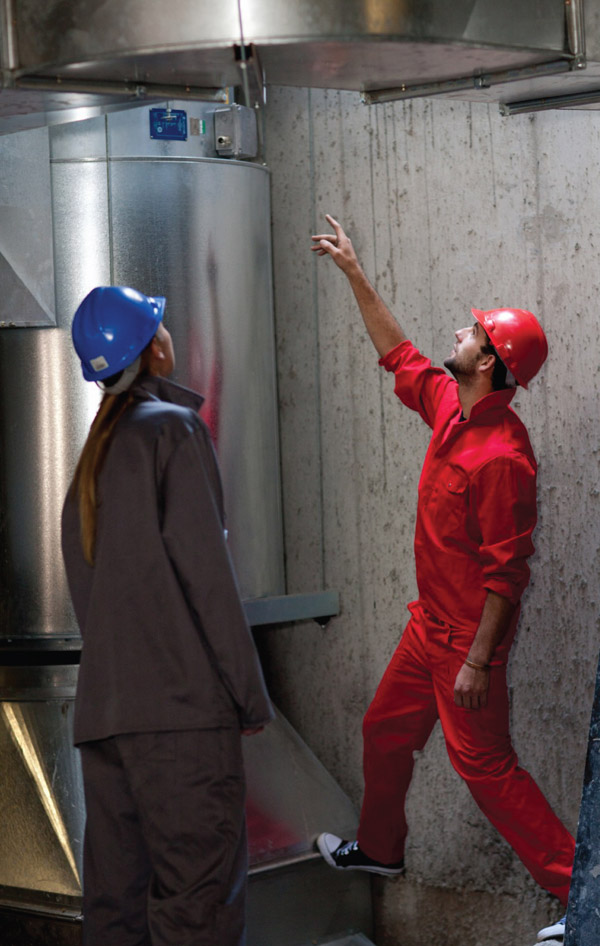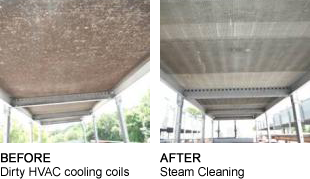


STIMO™ Super Steam
Innovation of Cooling and Energy Efficiency
STIMO™ equipment is designed and built in Malaysia to the highest quality standards with one goal in mind: to ensure top customer productivity and satisfaction. It is supported by cleaning specialists, engineers, service agent and authorized distributor of our replacement parts. Service support is only a phone call away. We keep your machines and jobs operating on schedule.

Revolutionary

In all HVAC units the heat is either removed or added to indoor spaces by coils. Optimum heat transfer and system efficiency, is determined by how clean the coil surfaces are. Dirty coils is the primary source of problems in HVAC systems.
The air moving across the evaporator and condensing coils, will always contain dust, dirt, pollen, grease, and moisture. When the coils become blocked, they simply cannot provide its designed or even adequate heat transfer, and this will costs you in many ways.
Efficient
Greatly reduce facility downtime from cleaning and increase your production efficiency. Steam requires very little to no preparation prior to cleaning or sanitizing. STIMO™ Steamer is pressurized and heated to 352°F, making it ready to steam for all day use in as little as 6 minutes*. Reach hard-to-reach nooks and crannies, and tackle those harborage areas without generating over-spray or puddles of waste water.
STIMO™ dry steam with gentle pressure can safely clean the most sensitive equipment components such as control panels, conveyor belts, HVAC coils and screens, walk-in coolers and freezers. Eliminate multiple steps of preparing, washing, soaping, rinsing, drying and cleaning up waste water. Less downtime means more production and increased efficiency.
| Brand Model | STIMO™ Super Steam |
| Dimensions (mm) | 440(W) X 660(L) X 780(H) |
| Electrical Supply (V/Hz) | 415V 3 phase/50~60 |
| Weight | 58.5 kg |
| Water Tank | 16 Litres |
| Cable | 8 Meter |
| Boilder Output (W) | Max 10,800 |
| Boiler Volume (L) | 7.5 |
| Operating Temperature | 180 +/- 3 degree |
| Operating Pressure (Bar) | 9 |
| Steam Production (g/min) | 291 |
| Functions | Dry saturated steam |


Versatile
Dirty coils also create an excellent breeding ground for bacteria and mold, negatively impacting a building’s indoor air quality, and potentially the health of people indoors. In addition to the coils, the condensate pan is prone to the build-up of bacterial slime. If it doesn’t drain properly, it can become a breeding place for harmful bacteria and can cause significant water damage.
 Green Machine
Green Machine
Comparison to
Chemical Cleaning
What’s more, conventional cleaning products are not always an effective means of cleaning the high efficiency cooling coils found within HVAC units. While systems may appear clean on the surface, these products push dust and debris further into the unit, which can create blockages in the system and initiate mold and bacteria growth
This can lead to excessive operating costs, comfort control problems, and unhealthy sanitary conditions that are not conducive to good air quality As a result, building occupants may experience allergy-like symptoms, coughing, wheezing, watery eyes, asthma-type conditions, and other symptoms.
In some cases, poor indoor air quality can even affect an individual’s ability to perform specific mental tasks. The worse the air quality, the more likely that the building’s occupants are affected by these symptoms-and that is a liability to the organization or property owner.